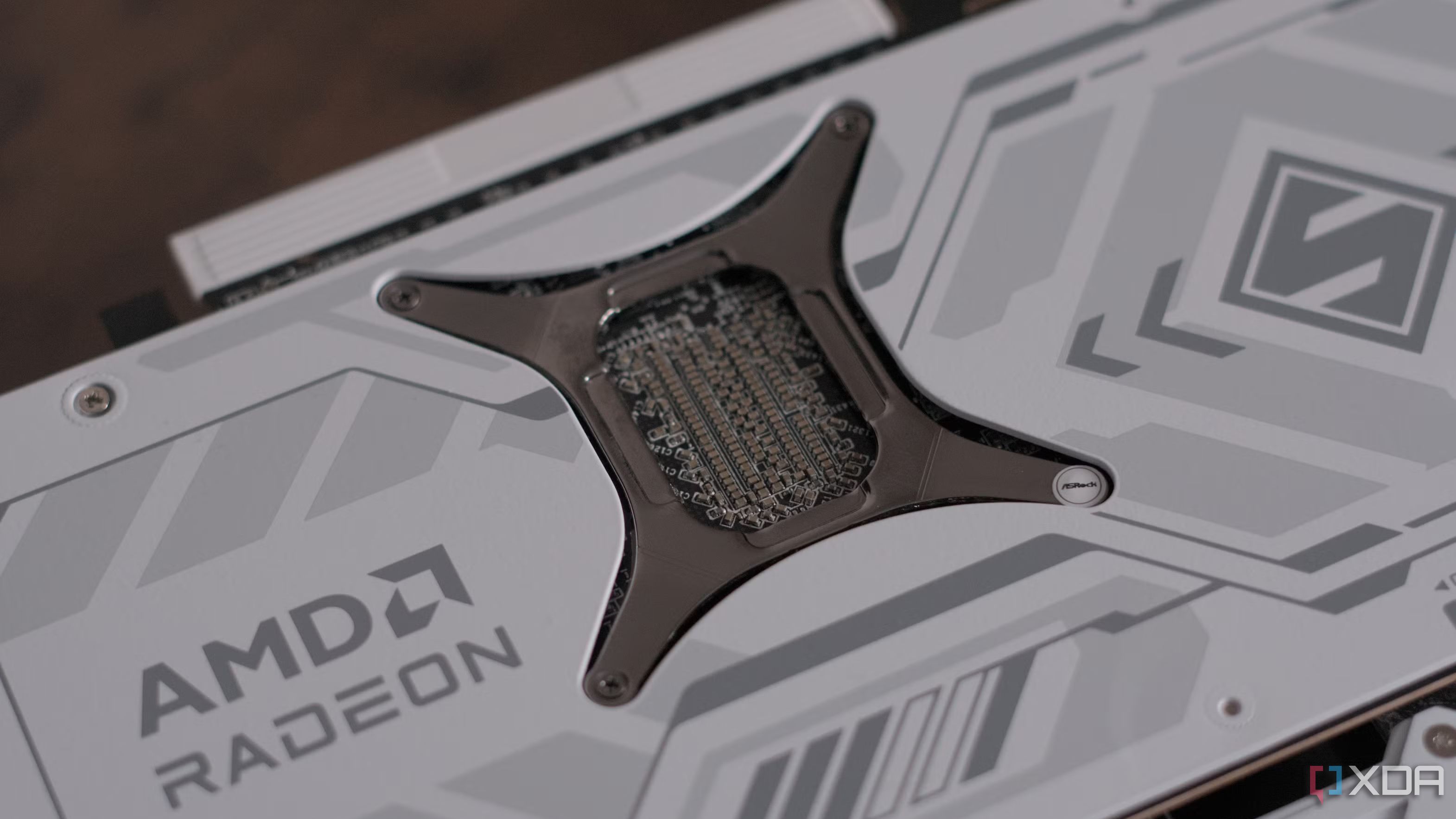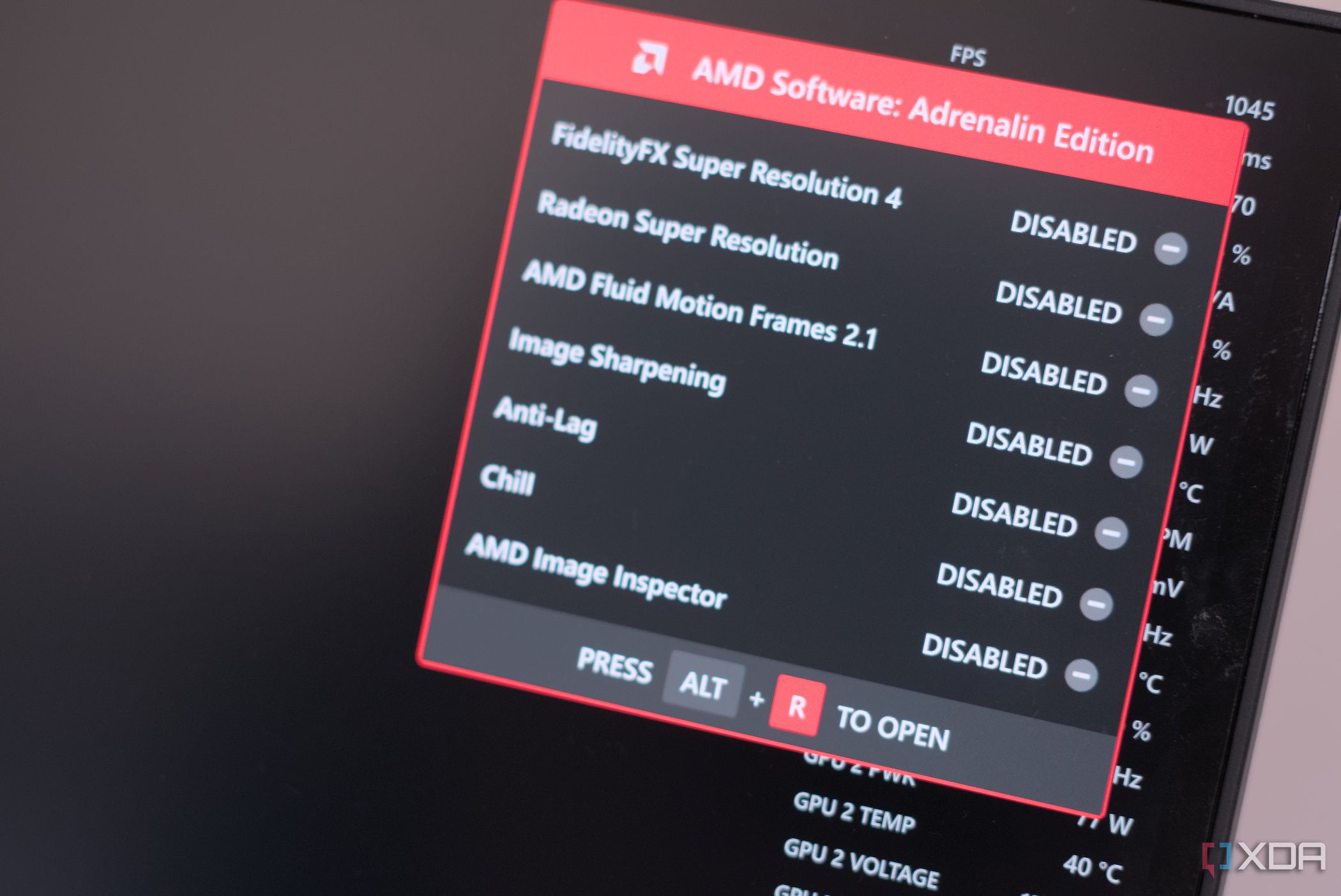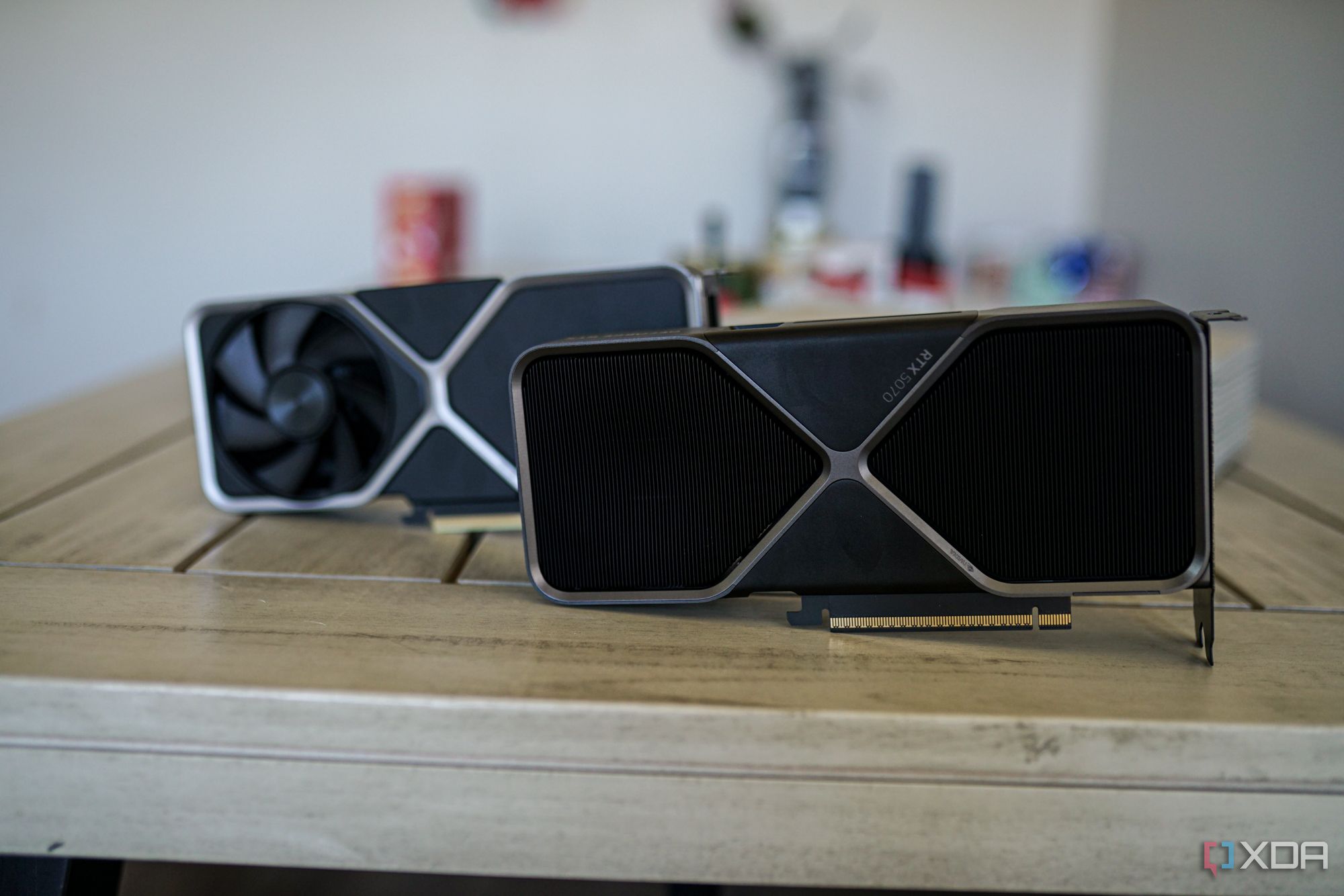Load up a new tab or head to YouTube and search for “fake frames.” You’ll find dozens upon dozens of videos and articles talking about DLSS 4, and in particular Multi-Frame Generation (MFG), and the downsides of generating frames with an AI model instead of rendering them. We’ve even used the term here at XDA.
There are plenty of trade-offs when it comes to DLSS 4, particularly when looking at MFG. However, the idea of fake frames has run rampant without the proper context, and it’s high time to correct course a bit. There’s plenty of criticism that Nvidia has earned over the past few generations for leveraging DLSS to mislead customers, and I suspect the vitriol around the feature largely stems from this misleading marketing. Writing off DLSS 4 wholesale isn’t the solution to that problem, though.

Related
4 ways FSR 4 gives DLSS 4 a run for its money
FSR is no longer an afterthought for gamers
The idea of “fake frames” misses the point of rendering
It’s only a shortcut until it becomes commonplace
DLSS 4 is cheating. The hardware that Nvidia is putting out today is only capable of offering so much real-time performance, so instead of putting more hardware inside the graphics card, Nvidia makes up the gap with DLSS 4. It cheats the rendering pipeline by taking a low-resolution image and feeding it into an AI model to produce a frame that looks close (and sometimes better) than native resolution with DLSS Super Resolution. And it cheats by taking a couple of real, rendered frames and producing two, three, or even four “fake frames” to go in between. This isn’t a criticism. These are facts.
In 1993, Star Fox for the Super Nintendo was the first game to include the Super FX chip on the cartridge. The SNES wasn’t capable of 3D graphics, but the on-board Super FX chip was. The chip wasn’t powerful enough to render a full scene in 3D, so instead, it rendered objects like your ship with 3D polygons while relying on 2D bitmaps for other objects. Entertainment Weekly called it a “pseudo-3D space shooter” at the time. It wasn’t a real 3D space shooter. It was a fake 3D space shooter.
In 2018, Battlefield V became the first game to ship with real-time ray tracing effects. Supporting only Nvidia’s blossoming RTX-series graphics cards, the game’s ray-traced reflections were too demanding to run in real time. As you can see in the GDC talk from a few years ago above, developer DICE cheated the rendering pipeline in a ton of ways to get playable performance. It used techniques like Variable Rate Tracing, tracing far fewer rays for less important areas of a scene, and ray binning, where it would group rays heading in a similar direction together to reduce the demand on hardware. Following the logic of Entertainment Weekly and Star Fox all the way to DLSS 4 and MFG, this would be fake ray tracing.
That seems a little silly, now doesn’t it?
There is a disconnect between the technology of DLSS and the final result it’s capable of producing. Obviously, we wouldn’t call Star Fox fake 3D today, nor would we call the ray-traced reflections in Battlefield V fake. When it comes to DLSS, however, there’s a prevailing idea that if the GPU doesn’t render the pixel, it somehow isn’t a real pixel. It’s lesser than those painstakingly calculated by the GPU because it’s being calculated by an AI model. Follow that reasoning to its logical conclusion, and you can say that pixels rendered by a GPU are lesser than those rendered by a CPU. The GPU is more efficient at producing the pixel than the CPU, and the AI model is more efficient than the GPU, after all.
There are trade-offs when pushing the next level of visual quality in real-time rendering. Real-time ray tracing requires denoising that can muddy the “real” lighting of a scene, just as MFG can produce visual artifacts and increase latency. Once you take a step back and stop assigning “real” and “fake” designations to how pixels are rendered, though, you can appreciate where the trade-offs make sense and where they don’t. Calling the pixels that DLSS 4 — or any AI-assisted upscaling/frame generation tool — offers “fake” undermines the decades of advancements in real-time rendering and distracts from the experience that the technology can offer.

Related
5 ways DLSS, FSR, and XeSS are the perfect solution for SFF gaming PCs
Here’s why you won’t need the most powerful GPU for your compact gaming PC.
DLSS 4 can make the impossible possible
I’m not complaining when the alternative is not playing a game
Although I don’t agree with the idea of “real” and “fake” pixels, I don’t want to go too deep in the weeds here without recognizing the real trade-offs that DLSS 4 and MFG make. Although the new transformer model for DLSS 4 can produce image quality that’s even better than native rendering, you still have to contend with visual artifacts and latency with MFG. If you can render every frame with the GPU, that still provides a better experience than what you can get with frame generation, at least right now. That may change in the future, as it has with DLSS 4’s upscaling quality, but that’s where we are today.
When the difference between playable and unplayable performance is MFG, though, I’m not complaining about the side effects.
A great example of this is Nvidia’s recently-released RTX 5060 Ti. The card provides about a 20% improvement over its last-gen counterpart, which is a so-so performance jump. With MFG, however, it’s capable of offering performance and quality settings that just wouldn’t be possible otherwise. Below, you can see some numbers I gathered for my RTX 5060 Ti review. Here, I’m testing at 1440p with the highest possible graphics settings, including path tracing in games that support it. That sometimes even includes pushing higher than the highest graphics preset, such as in Indiana Jones and the Great Circle.
|
Native |
DLSS |
DLSS Settings |
|
|---|---|---|---|
|
Stalker 2 |
51.6 fps |
113.3 fps |
2X + Balanced |
|
Monster Hunter: Wilds (RT) |
36.1 fps |
75.5 fps |
2X + Balanced |
|
Indiana Jones and the Great Circle (PT) |
25.9 fps |
137.9 fps |
4X + Balanced |
|
Cyberpunk 2077 (PT) |
17 fps |
122.4 fps |
4X + Balanced |
|
Half-Life 2 RTX (PT) |
15.1 fps |
133.8 fps |
4X + Performance |
There are latency trade-offs, and you might see some ghosting on your HUD. But we’re still talking about a midrange graphics card offering triple-digit frame rates in some of the most demanding games available today, and at a high resolution. It’s very difficult for me to see the downside of DLSS 4 and MFG in this context. Sure, we can talk about whether the feature is worth it when you have a ton of GPU horsepower on tap, but when DLSS 4 is the difference-maker in a playable gaming experience on a midrange GPU, I’m not going to argue.

Related
I hate how modern games use DLSS as a crutch for unoptimized code
The way modern games rely on DLSS to mitigate performance issues is truly disappointing. The fact that several triple-A games encounter major performance hiccups on the most high-end graphics cards speaks volumes about unoptimized code, and I hope this trend dies out soon.
A narrow window is still a window
MFG isn’t always useful, but that doesn’t mean it’s useless
Last month, I wrote about how I barely use DLSS 4. The idea was that MFG, in particular, only has a narrow window of usefulness. If you feed the algorithm with too low of a base frame rate, it quickly devolves into so many visual artifacts that it’s unusable. There’s some nuance to that point that I didn’t fully explore in that piece, though. The window of usefulness for DLSS MFG may be narrow, but there’s still a window where it’s useful. More importantly, that window can grow or shrink depending on what games you play.
For instance, in a first-person game like Cyberpunk 2077, MFG can look downright horrible if you don’t feed it with a high enough base frame rate. By contrast, a slower third-person game like Alan Wake 2 can handle a low base frame rate with MFG turned on. The camera doesn’t move as fast with a third-person perspective, so you can push MFG harder, and the methodical movement in that game means you’ll seldom run into massive differences in one frame to the next. The stripped-back HUD works in MFG’s favor in Alan Wake 2, as well, which is a particularly problematic area for visual artifacts in a game like Cyberpunk 2077.
You shouldn’t just turn on 4X Frame Generation and expect an excellent gaming experience. You won’t get it, especially with a first-person game like Cyberpunk 2077. You need to take the full DLSS 4 package into account, including Super Resolution, MFG, and Reflex. Maybe you only need to generate a single frame, or maybe you need to push Super Resolution harder to make MFG work its best. The whole package offers that flexibility, and with a few tweaks, you can easily get a game that looks buttery smooth without becoming a mess of artifacts.
There are some games where MFG still doesn’t make sense, and I don’t know if it ever will. Games like Marvel Rivals, where latency is important, aren’t great candidates for the feature. And lightweight titles like Deep Rock Galactic that are light on your system anyway have little to gain from the feature. Still, there’s a massive library of demanding single-player titles that can benefit from MFG, and with the right settings, it can completely transform your gaming experience.
A few downsides shouldn’t distract from the upsides
DLSS 4 isn’t perfect. MFG doesn’t always work the way it should, and I’m not against advocating for less expensive GPUs that offer more performance, especially with recent releases like the RTX 5070. However, that doesn’t mean you should write off DLSS 4 wholesale as somehow offering fake performance. Your GPU may not be rendering the pixels the hard way, but if the gameplay experience is good, that’s all that matters. And in most cases, when you flip on DLSS 4 with Super Resolution and MFG, you’re getting a good experience.
What isn’t acceptable is Nvidia using DLSS 4 to mislead customers about the product they’re buying. That was on full display with the RTX 5070, where Nvidia claimed it offered the performance of an RTX 4090 when it doesn’t come anywhere close. Nvidia has earned plenty of criticism for obfuscating the capabilities of its GPUs with DLSS, but that shouldn’t discredit what the feature can offer.












